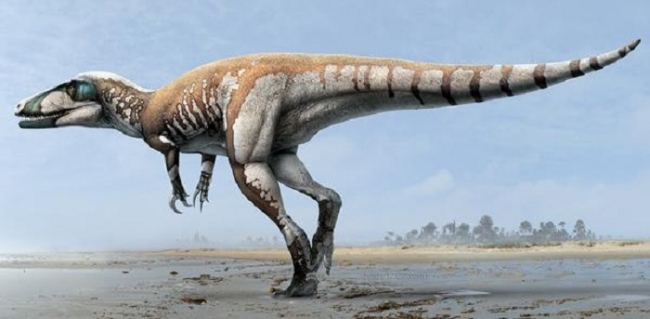The remains of a “lightning claw” dinosaur was discovered by opal miners in Lightning Ridge, New South Wales. The giant dinosaur was said to have existed during the mid-Cretaceous period in the supercontinent called Gondwana, according to Australian Geographic.
“From our calculations this animal would have been about seven meters in length, which is the biggest carnivorous dinosaur currently known from Australia,” said paleontologist Phil Bell at the University of New England in Armidale and lead author of the study describing the archaeological find, according to Australian Geographic.

The “lightning claw” dinosaur, measuring seven meters long, is bigger than the five-meter long Australovenator, which was previously thought to be Australia’s biggest carnivorous dinosaur. (Photo : Twitter Photo Section)
The “lightning claw” dinosaur hunted in waterways and swamps. One of the distinguishing characteristics of the “lightning claw” dinosaur is, as the name suggests, its large claws.
“It was obviously a predator but the key thing about this guy is the giant claws on its hands. These claws compensate for a rather dainty skull and slender jaws, which are unlike the giant skull of a T-Rex, which had a bone crushing bite,” Bell told The Guardian. “This dinosaur probably ran down its prey and used its arms like grappling hooks. Its mouth was simply to tear off small pieces of meat.”
The fossil find was almost complete, but some parts were destroyed before they could be extracted. At this time, the dinosaur does not yet have an official scientific name, and there is not enough evidence to immediately declare it as a new species.
“When I first saw the bones I knew they were important and unique but it’s taken until now to do all our comparisons and find out this is a new dinosaur to science,” Bell said.
The discovery of a mid-Cretaceous megaraptorid in New South Wales challenges earlier beliefs that the dinosaurs in the region originated from other places and merely found their way to Australia.
Bell and his co-authors wrote that the finding of the “lightning claw” dinosaur fossil indicates “that Australia’s Cretaceous dinosaur fauna did not comprise simply of immigrant taxa but was a source for complex two-way interchange between Australia, Antarctica, and South America, leading to the evolution of at least one group of apex predatory dinosaurs in Gondwana.”
The study describing the “lightning claw” fossil was published in the online Sept. 5 issue of the journal Gondwana Research.



 September 14th, 2015
September 14th, 2015  Riffin
Riffin  Posted in
Posted in  Tags:
Tags: 